A garment by ISSEY MIYAKE is instantly recognizable. The fashion house’s characteristic blend of traditional (using egg whites to create the blackest of blacks) and cutting-edge technique (be it pleating or Steam Stretch) is a dead giveaway. All of it is the result of years and years of research and development.
Which is part of the fun for its designer Yoshiyuki Miyamae. He joined ISSEY MIYAKE in 2001, working directly with Mr. Issey Miyake and Dai Fujiwara on their famous A-POC (A Piece of Clothing) project.
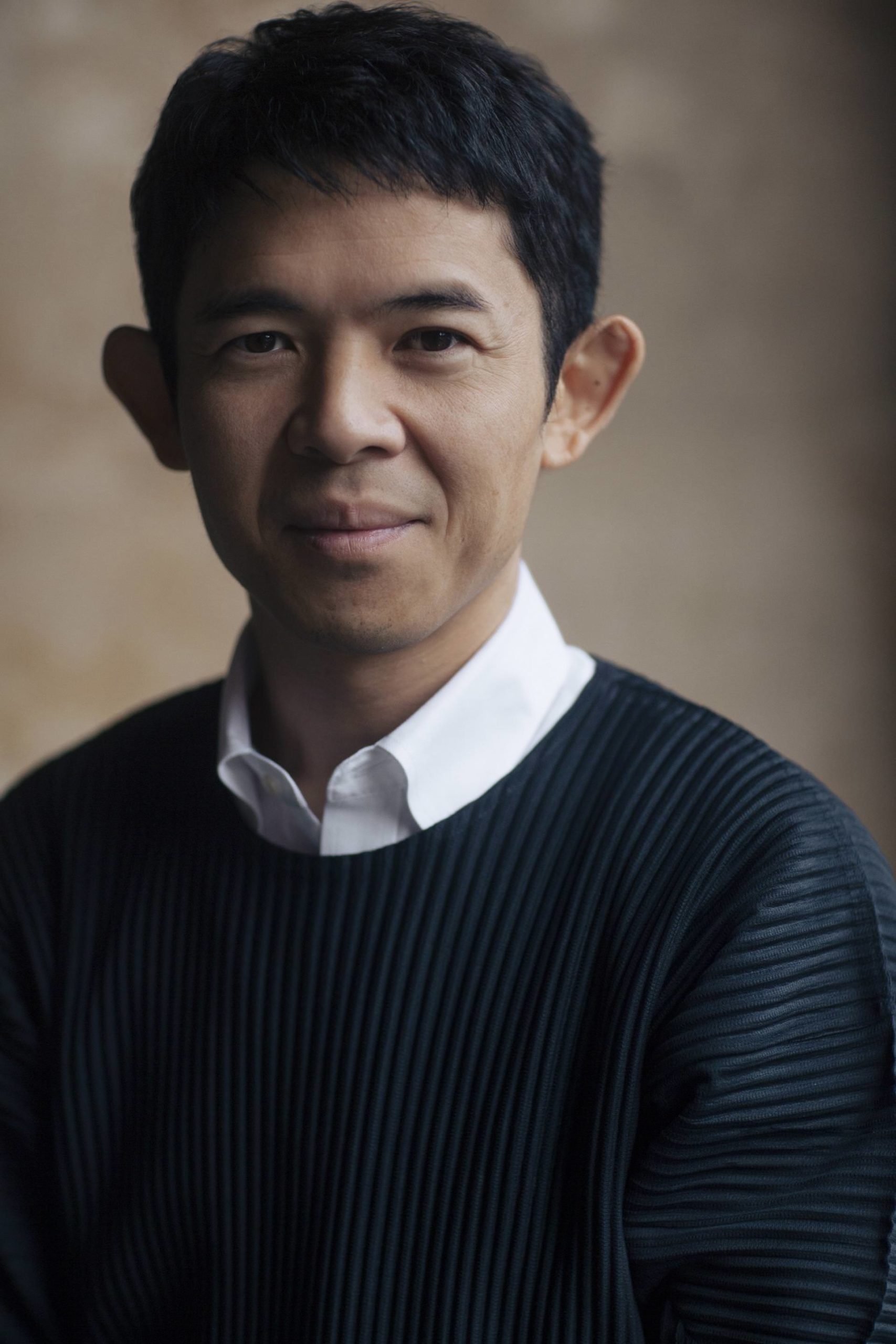
Yoshiyuki Miyamae, portrait by Takeshi Miyamoto.
His Fall/Winter 2018 collection was inspired by a long, harsh winter in Japan, and the beauty of nature’s ability to endure until the coming of spring. Stark whites contrasted with blacks and browns, eventually giving way to the vibrant colors of the season ahead.
Whitewall spoke with Miyamae about the patience needed to balance the demands of the fast-paced fashion cycle, and the responsible approach to design he learned early on from Mr. Miyake.
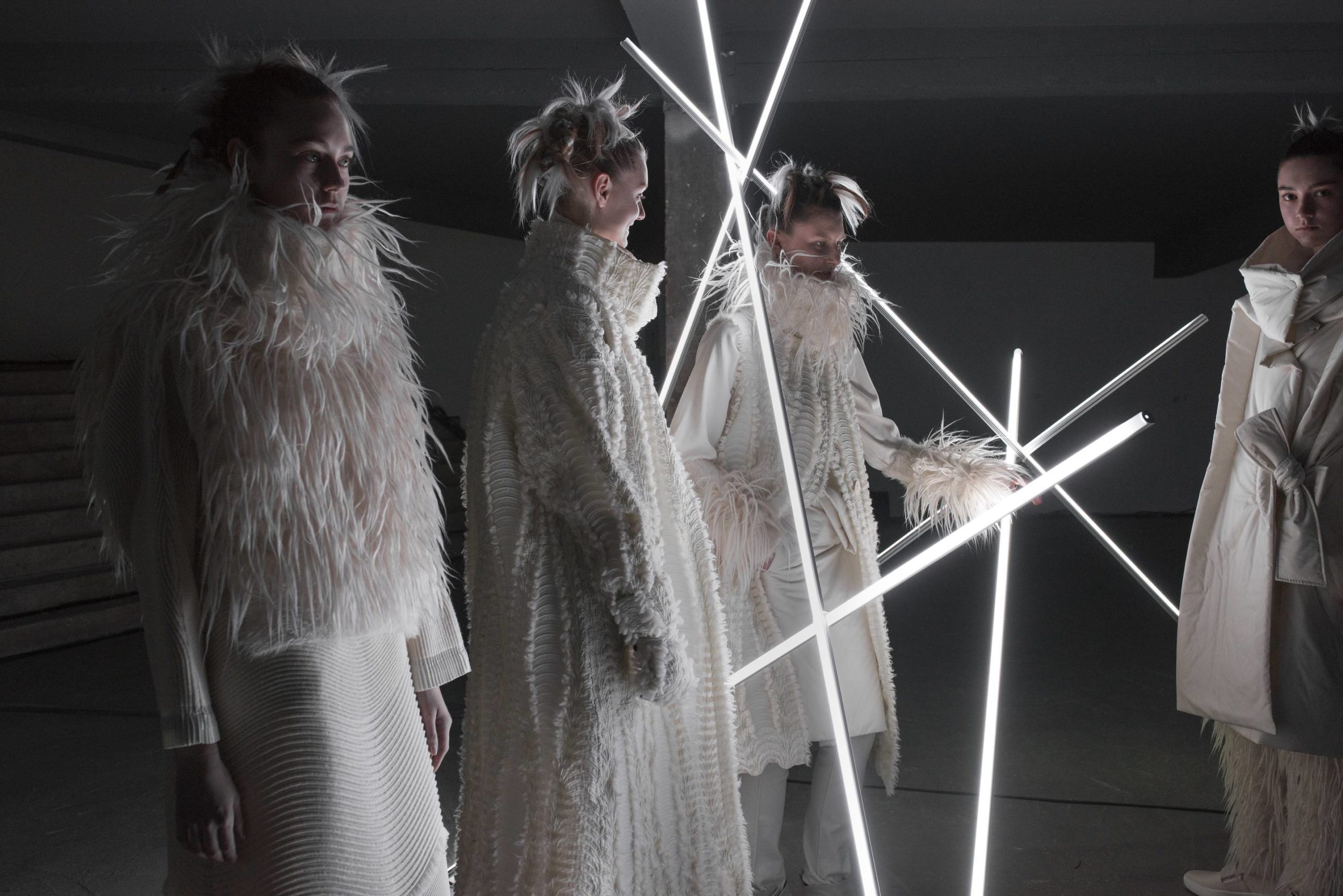
Issey Miyake fall/winter 2018, photo by Olivier Baco.
WHITEWALL: You’ve said that you had a creative childhood—making things and drawing. What made you interested specifically in fashion?
YOSHIYUKI MIYAMAE: From a very early age, I liked to draw pictures and create things. I started making my own clothes when I was 16 years old, and that is when I decided I wanted to be a designer. Right after that, I was lucky enough to be able to see an ISSEY MIYAKE show that was held in Tokyo at that time. The show I saw was absolutely amazing and inspiring to me, and left a lasting impression in my mind. I still remember the beautiful, colorful clothes that were dancing, and the energy of the space is still fresh in my mind.
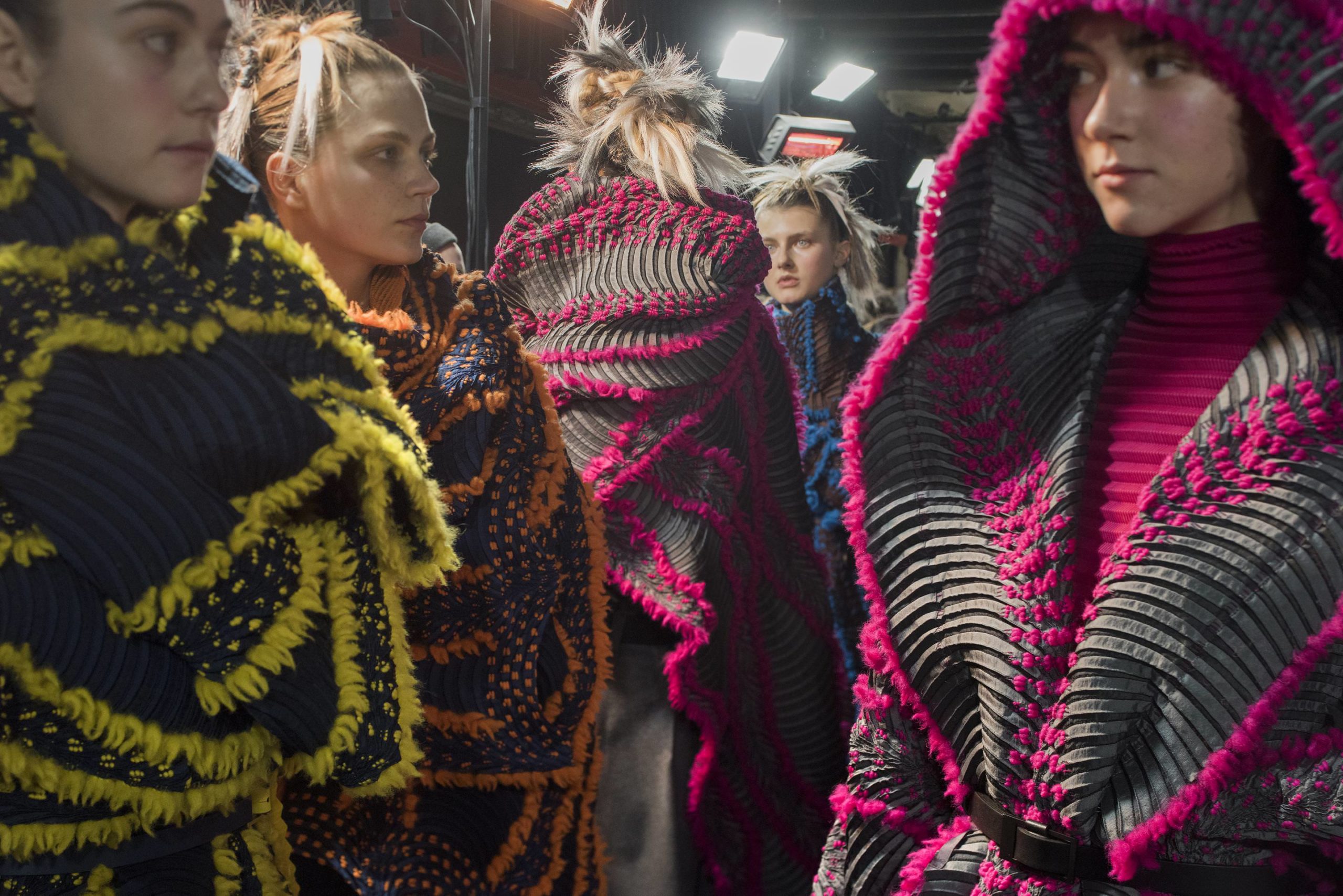
Issey Miyake fall/winter 2018, photo by Olivier Baco.
A few years after my graduation from college, Mr. Miyake launched A-POC (a project creating garments using a single-form creation process). This new way of making clothes made me even more curious about ISSEY MIYAKE.
WW: You’ve said that, working with Mr. Miyake, you soon learned that design came with responsibility, rather than just creating something for one’s own amusement. Can you tell me more about coming to that realization?
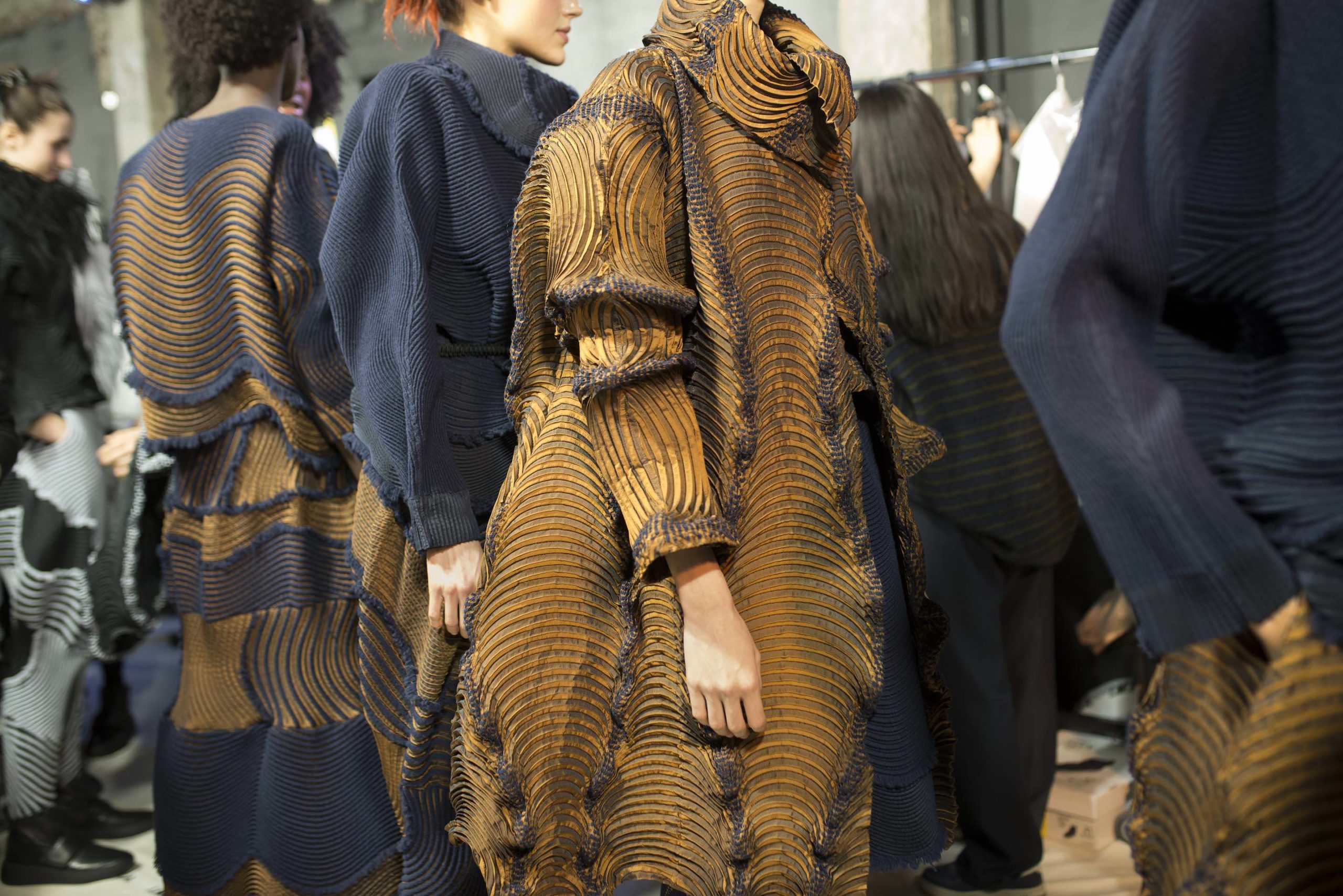
Issey Miyake fall/winter 2018, photo by Olivier Baco.
YM: Design has a collaborative component. Clothes cannot be made by oneself. Many people participate in making one garment, and with that, responsibility always comes along.
WW: How did that change the way you thought about making clothes?
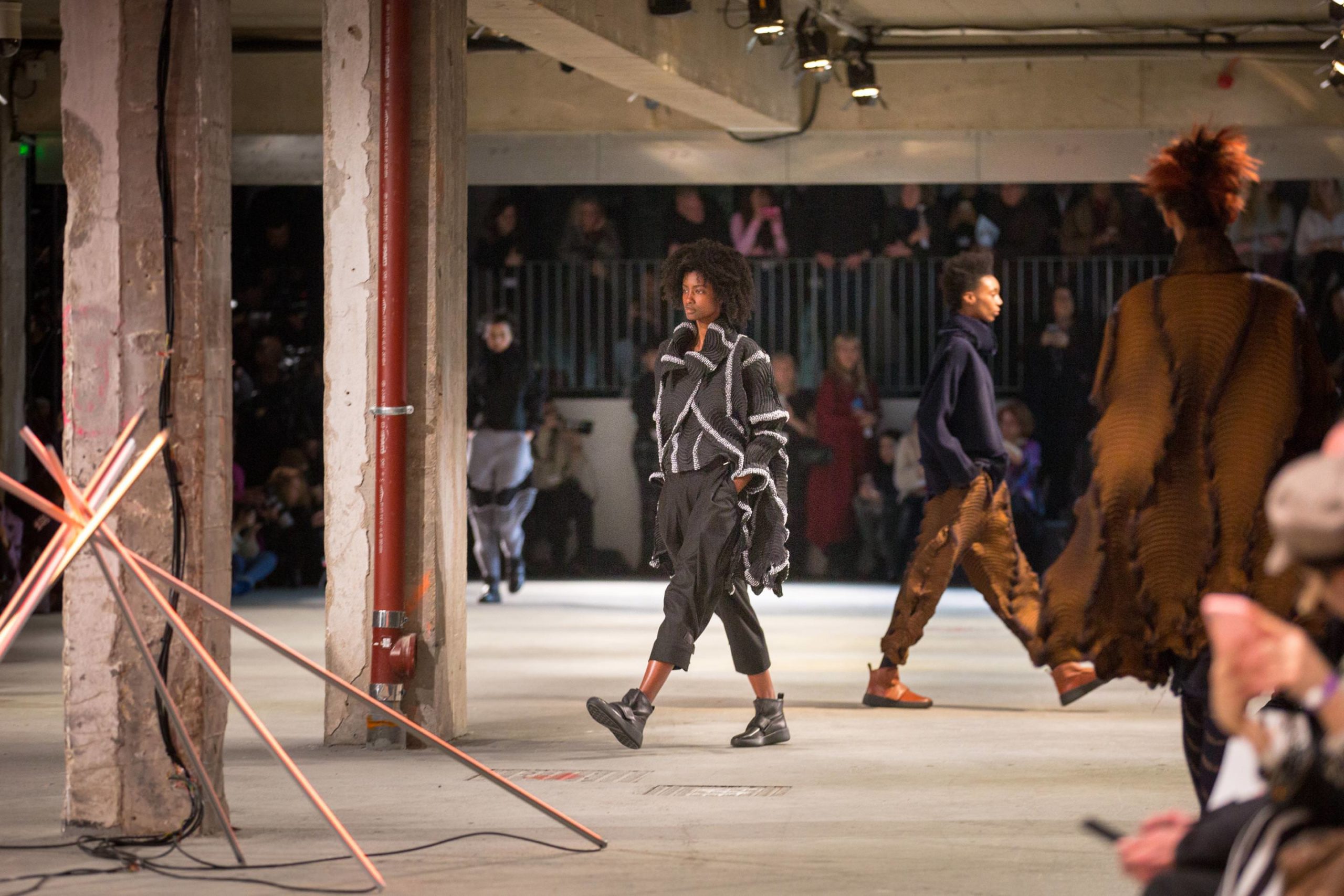
Issey Miyake fall/winter 2018, photo by Frédérique Dumoulin.
YM: Every day we are in constant contact with our craftsmen and production teams, to form and expand upon our design ideas. We wrestle with the balance between design and business. Sharing the same vision with the design team, along with open and clear communication, is very important to me in order to achieve the best results.
WW: How do you think ISSEY MIYAKE’s approach to blending new technology with traditional technique reflects our current time?
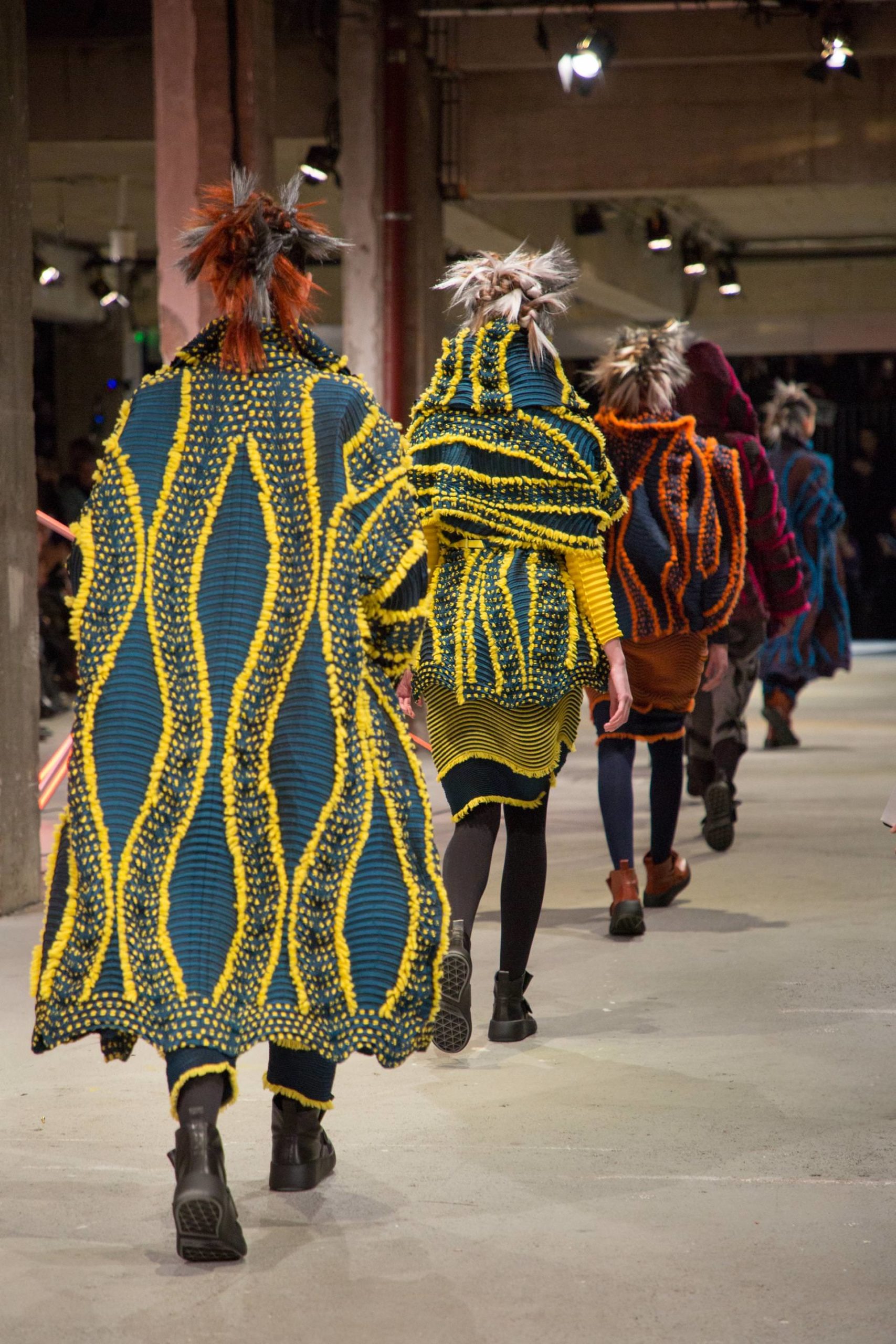
Issey Miyake fall/winter 2018, photo by Frédérique Dumoulin.
YM: I’m always searching for new surprises and discoveries. I believe connecting technology and tradition, which seem like opposites, brings new possibility. In addition, connecting people, places, and objects together creates new potential and is part of my mission as a designer today. I want to develop and re-create in this present age, by not only keeping the tradition as old heritage, but also by combining new technology and interpretation.
WW: You’ve said that simple is the most difficult. What are the challenges of making incorporated new technologies simple and wearable?
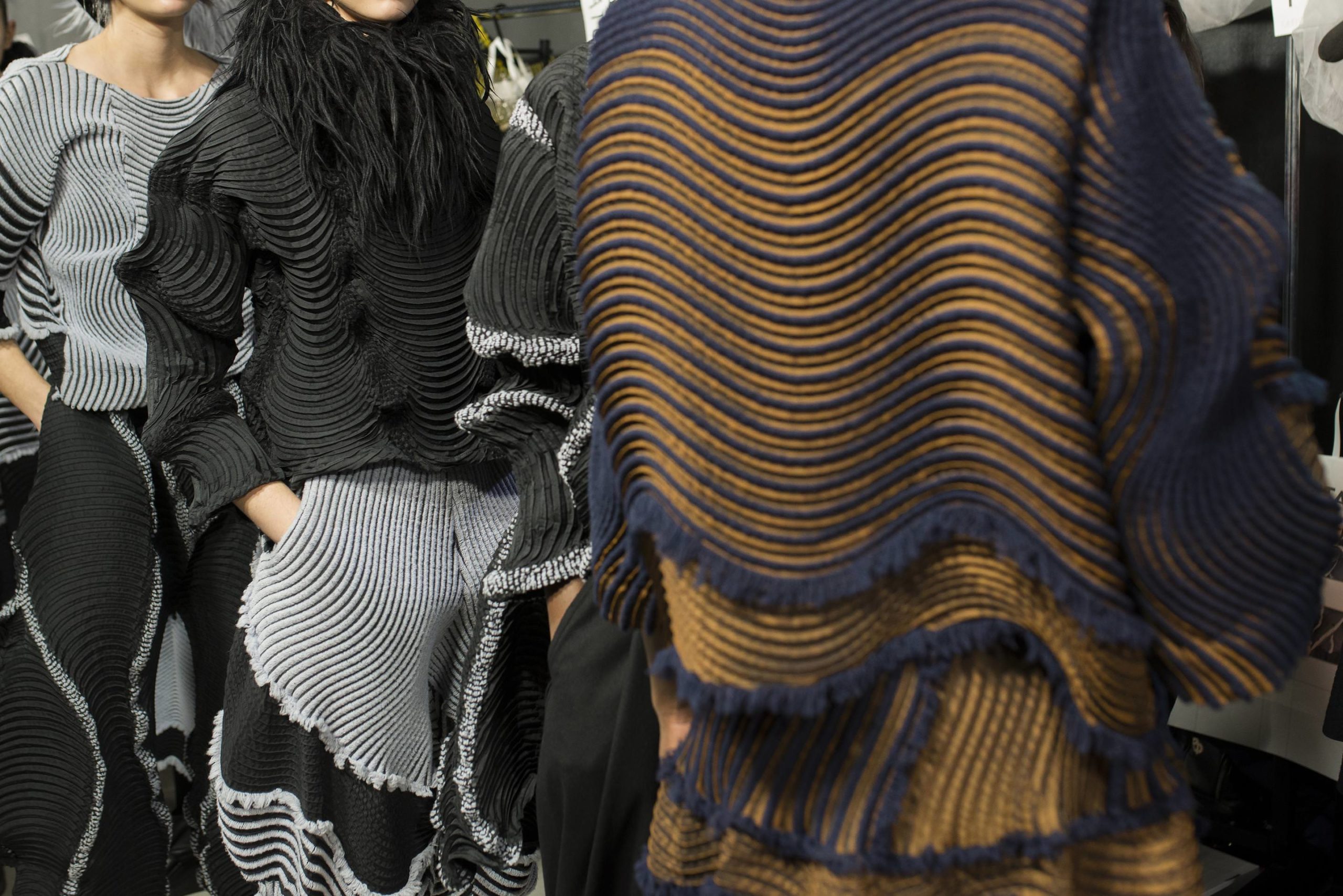
Issey Miyake fall/winter 2018, photo by Olivier Baco.
YM: Less is more. Subtracting is more difficult than summing up. Our starting point is always with the textile, and then finding the best way to extract its potential in order to make the final garment. Our main goal is to create a universal, timeless design that is not based just on style or trend.
WW: Last year you collaborated with Sony to create an electronic bag, using the technology of an e-reader. How would you like to see a project like this progress?
YM: Research and development takes time, but we always try to challenge ourselves. Collaboration with others in different fields always brings new discoveries to our team. I would like to continue such research and development in the long-term.
WW: Making sure new techniques you introduce are wearable and functional can sometimes take a couple years to perfect (through multiple trials). What keeps you searching for what will work?
YM: Characteristic material development of the brand, such as pleats and A-POC, which cannot be seen in other fashion houses, is a strength of our brand. Naturally, textile innovation takes time. In the fast cycle of the fashion industry where change is constantly in demand, strong faith and patience are a necessity to continue and develop ideas without losing our brand’s identity.
Two original techniques that are the representative result of continued research over several seasons are Steam Stretch (a technique by which creases are woven into A Piece of Cloth using heat-reactive thread, which shrinks when steam is applied to the garment) and Baked Stretch (a technique whereby a special glue is printed on the fabric and baked with heat to create pleats). I now feel the importance of continuing these as well.
By inheriting the philosophy of ISSEY MIYAKE, we will continue developing new materials through distinctive research. ISSEY MIYAKE’s concept “A Piece of Cloth” always continues to evolve.
WW: How are you able to predict what ISSEY MIYAKE fans will be looking for multiple years into the future?
YM: I cannot predict the future, but I follow my intuition and try to value things that we feel are new and exciting. I would like to share these surprises and emotions with customers through the final results.
WW: You’ve said that designing is an infinite process, that with every new innovation, a new challenge comes up. Why does that appeal to you?
YM: I believe that designers must never stop asking questions and must push themselves throughout the design process. I think that it is the role of the designer to discover problems and solve them with the power of design.
I think problems that I can solve immediately are also easy to solve for everyone else. Therefore, I get excited when a difficult challenge appears! Because there is new possibility in the solution.
WW: Can you tell us about the starting point for the Fall/Winter 2018 collection, “Silent Energy”?
YM: If I name the universal inspiration for me, it is nature. Nature has a beauty which human beings cannot create. If you dig deeper into it, it may be connected to the Japanese culture and perspective on nature. It is also related to our diet and the way we live in our culture.
Every season, I am inspired by various natural phenomena and forms. The Fall/Winter 2018 season was inspired by the enduring plants and animals living and waiting for spring to blossom during the cold, harsh winter months.
WW: How did long winters become a point of inspiration?
YM: Winter always turns to spring. Seeing the enduring plants and animals living and waiting for spring made me fascinated and optimistic to see the continued cycle of the seasons.
The collection palette shows a story: After a long, snowy, white winter, the ground comes out as the snow melts, and then spring comes, where vibrant colors appear.
WW: Outside of fashion, where do you find inspiration? Is it nature? Art? Music? Film? Travel?
YM: I find inspirations everywhere, whether it is from new materials encountered through research, casual conversations with friends, cultural movements from newspapers and TV, plays I often go to see, or fragments of various ideas existing in my mind. My inspirations are always connected to each other to create an image or motif.
I was born and raised in Tokyo, and still live in Tokyo. As a counterbalance to my busy daily life, I find that travel gives rhythm to my life, and my interests lead me to nature to seek inspiration from the extraordinary.
I traveled to Iceland before I started to work on the Spring/Summer 2018 collection. The Icelandic landscapes gave me tremendous influence and inspiration. Jet-black landscapes of lava without plants, beautiful green hills covered with moss, and impressive glaciers from thousands of years ago were part of the superb views I was able to see and gain inspiration from. It was a nice trip that allowed me to envision the history of the earth. The impressions given throughout the trip led me to the beginning of the collection; they were the driving force of its creation.
WW: What have you seen or consumed recently that you’re still thinking about?
YM: My head is currently full of thoughts about the upcoming collection.
WW: Where do you often begin with a collection?
YM: Researching new textiles is always the start. As a team, we make prototypes and innovate together. Some new materials can be accomplished in about three months, but others take a few years. Similar to making a movie, everything is developing at the same time.
WW: What kind of energy do you want your clothes to give to their wearers?
YM: I always want to make sure the wearers feel confident and happy.









